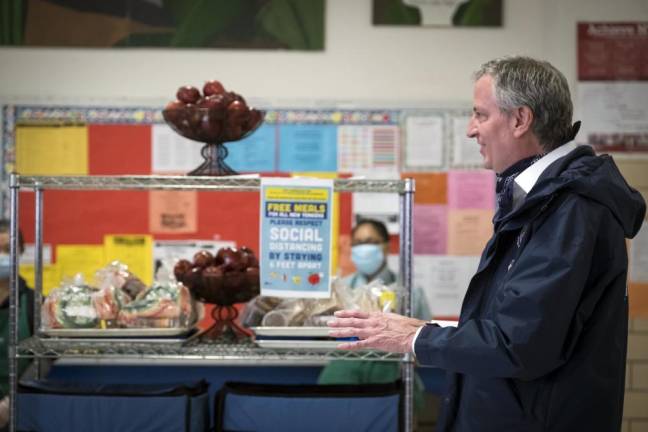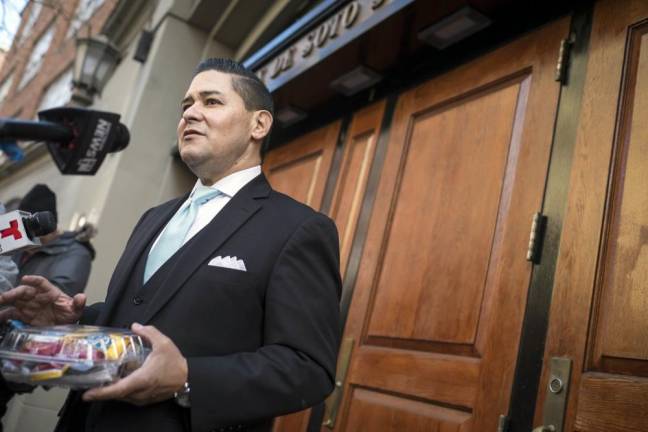Kids and the Future of School
Amid a rare inflammatory illness and the stresses of remote learning, questions about what students will face this fall


It has been an open question as to what the 2020-21 academic year will look like in New York as the city continues to manage the COVID-19 outbreak and plot a path forward. But the prospect of schools reopening in the fall for classroom instruction seems even more dubious by the growing number of children developing a rare, and in some cases deadly, inflammatory syndrome linked to the coronavirus.
The condition, known as Pediatric Multisystem Inflammatory Syndrome (PMIS), was first identified in April and has affected mainly school-age children and teenagers in North America and Europe. It’s been compared to toxic shock and Kawasaki disease, another inflammatory illness that presents in infants and toddlers, as the syndrome causes inflammation throughout the body and can lead to heart failure.
The number of cases in New York City rose swiftly last week with 52 cases reported on Tuesday, May 11 to 137 cases on Sunday, May 17. In all of New York State, three deaths have been reported in connection with the syndrome.
As the number of cases rise, and the syndrome’s connection to the coronavirus remains unclear, city officials must now grapple with how to proceed with educating the city’s children.
At a recent press conference, Mayor Bill de Blasio said the syndrome is “historically rare” and that he and other officials are taking it very seriously, but that his plan is to open the schools in the fall.
“We are watching it very carefully. And anything we do about schools is going to be led by health and safety first. That's absolutely the first question in any reopening,” said de Blasio. “As of this moment, we believe we can reopen schools safely and well in September. But we have to keep a very close watch on this syndrome to make sure that we attack it in every way possible in the meantime.”
The city’s health commissioner, Dr. Oxiris Barbot, echoed the mayor, saying the city was reaching out to pediatric health care providers and intensive care units for the latest information.
“As the science emerges and our guidance, if it needs to adapt, we will certainly adapt it,” said Barbot.
Richard Carranza, the chancellor of the city’s Department of Education, has thrown out some ideas this month as to how schooling might look different in the fall to ensure social distancing of students, teachers, and staff, including the staggering of class times, installation of desk partitions, and taking students’ temperatures and regularly testing students for the virus.
Remote Learning
But these options for the fall are still hypothetical. Gabrielle Utting, an English teacher at Manhattan’s High School for Environmental Studies, described the reality of education in the time of coronavirus in an interview with Our Town — and whether remote learning could be a sustainable, long term solution if it’s not safe to convene in classrooms come September.
Utting, who has been an educator for 11 years, in many ways has been able to adapt to remote learning. She and her co-teacher quickly realized that live Zoom instruction wasn’t going to work for all of their students, some of whom have special needs. But the two found a digital platform where the students could post analysis of their readings and engage in discussion together. It’s not the same as live classroom discussion, but it’s an alternative that has been working for them.
She’s also found creative ways for her students to engage with their readings, including assigning students to film themselves reciting a scene from "A Streetcar Named Desire," which they had read this semester.
Still, there have been major obstacles for Utting and her students as they navigate remote learning together. She said her students have been feeling confusion and uncertainty during this time, which has been a distraction. Some of her students have lost family members and loved ones to the virus, including one student who still planned to take his advanced placement test the day after his best friend died.
Utting said she’s also been feeling a sense of helplessness during this time.
“I normally have a little bit more control of everything; of knowing where my students are,” she said. “I [normally] know who's falling behind and who needs help and who doesn't. And just having the ability to make adjustments based on their needs.”
More Transparency
When asked about the prospect of another semester of remote learning, Utting takes a weighty pause. The thought to her seems daunting.
“A part of the reason that we were able to make this work at all is because we had seven months establishing relationships and routines,” she said. “And so much of our remote learning was finding ways to replicate those routines in this new setting. And I cannot wrap my head around what that's gonna look like, with 150 students who I've never met before. I don't know what's going to happen when we're all strangers. I just don't know how I'm going to motivate them and how to communicate with them and how I'm going to learn their name I can’t see their faces every day.”
If it is the case that schools will not be opening in September, Utting said the decision needs to be made sooner rather than later so teachers have time to prepare.
“I know there's some hesitation about making some of these calls, but if we wait until August to decide if we're coming back in December, and that's a lot of last time we could have been preparing how to translate our units to this virtual learning environment,” said Utting.
She would also like more transparency about what the city’s expectations are for students: How long should assignments be? What will the academic calendar look like? Will there be state testing? These are all questions Utting said needs to be answered.
“If [remote learning] has to be sustainable, we’ll make it sustainable,” said Utting. “But it's going to take a lot of work and it has to be very intentional in terms of how we develop curriculum in the future and thinking about what's going to help the students not fall behind so fast, without feeling overloaded and shutting down — because if they shut down, then they're not going to learn anything.”
“A part of the reason that we were able to make [remote learning] work at all is because we had seven months establishing relationships and routines ... I don't know what's going to happen when we're all strangers." Gabrielle Utting, English teacher at High School for Environmental Studies